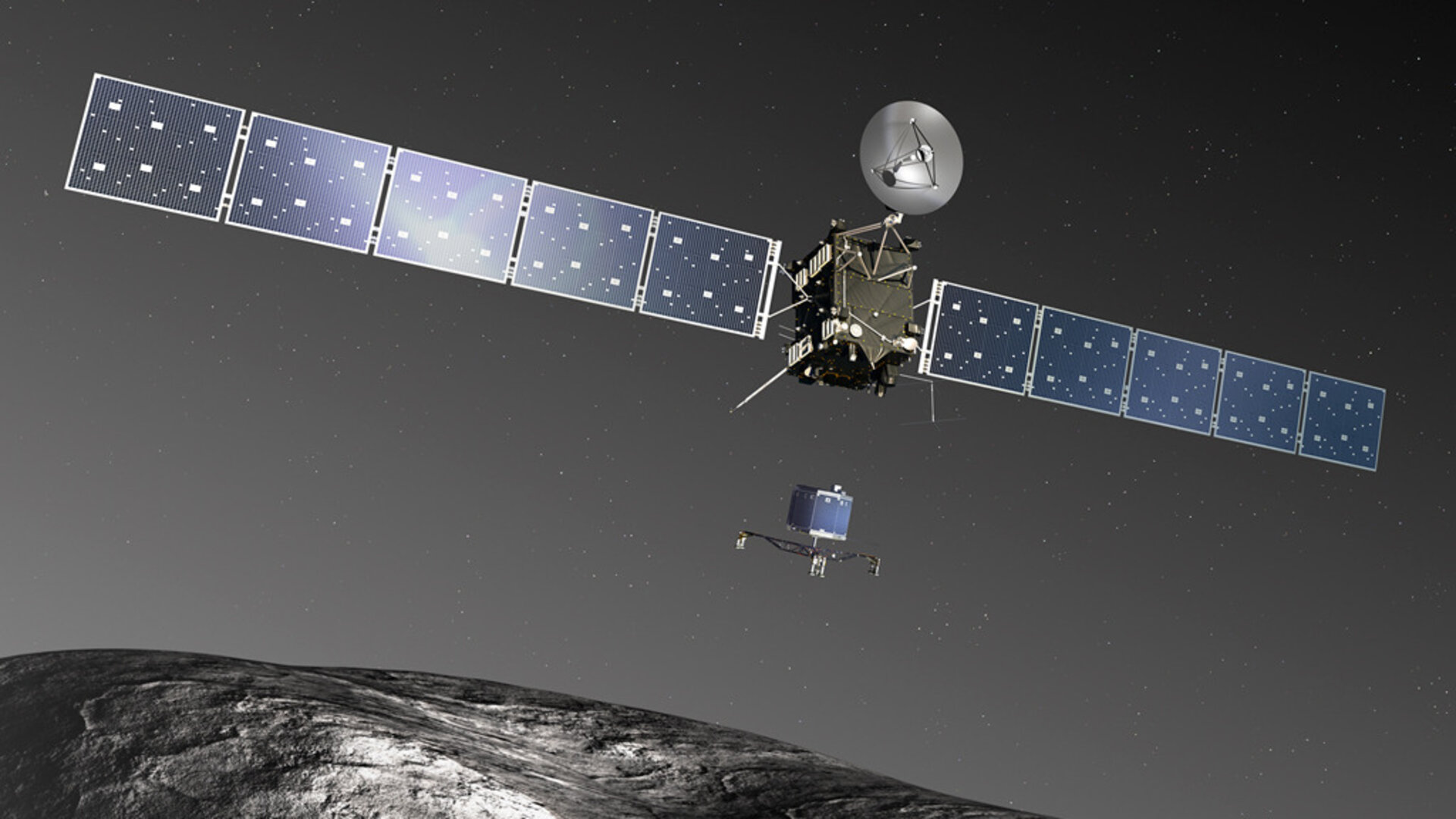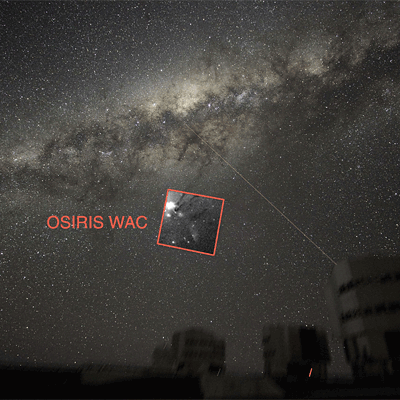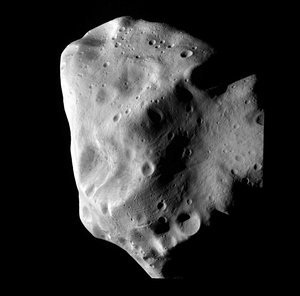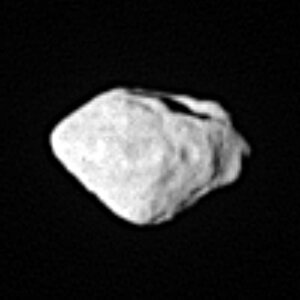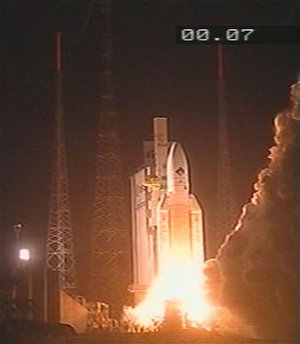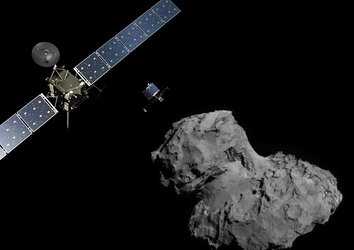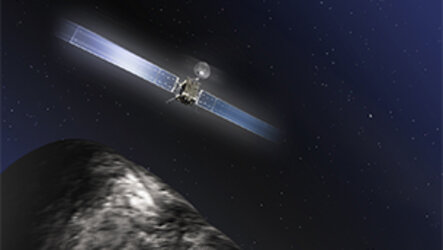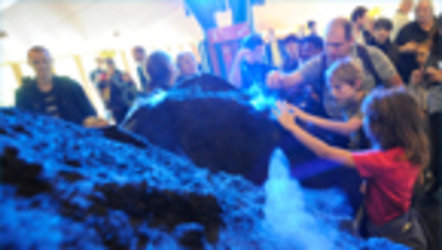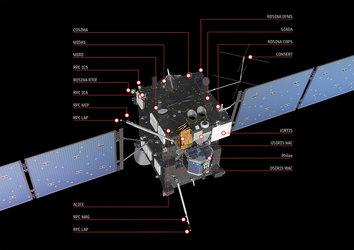Background briefing – Rosetta wake up and year ahead
Next year, on 20 January, after 957 days of hibernation in deep space, ESA’s comet-chasing Rosetta spacecraft is set to wake up automatically en route to the destination it has been travelling towards for nearly a decade.
Scroll to bottom of this page to watch replay of the briefing webcast recorded 10 December.
In preparation for the critical activation and the challenges that lie ahead for Rosetta, members of the media are invited to a briefing by ESA’s science and mission control experts and partners on Tuesday, 10 December, 10:00–12:30 CET, at ESA’s European Space Operations Centre (ESOC) in Darmstadt, Germany.
The 20 January milestone will mark the start of an intensive year as Rosetta draws steadily closer to comet Churyumov–Gerasimenko ahead of rendezvous in August. After extensively mapping the comet’s surface, it will dispatch the lander Philae in November for close-up study of the nucleus.
Rosetta will then follow the comet on its journey through the inner Solar System, monitoring the ever-changing conditions as it warms up heading towards its closest approach to the Sun, in August 2015.
Rosetta’s main objective is to help understand the origin and evolution of the Solar System, in particular investigating the role that comets may have played in seeding Earth with water, and perhaps even life.
ESA’s firsts with the Rosetta mission
Rosetta involves several ‘firsts’ in space exploration. It is the first mission to journey beyond the main asteroid belt relying solely on solar cells for power generation, allowing it to operate 800 million kilometres from the Sun.
Once at its target, Rosetta will be the first to orbit a comet and to land a probe on the nucleus, making it one of the most complex and ambitious missions ever undertaken.
Approaching, orbiting and landing on a comet require delicate manoeuvres, and since very little is known about the comet’s surface, a safe landing can only be planned after arrival.
Philae will obtain the first images taken on the surface of a comet and it will make the first in-situ analysis of the composition by drilling into the surface.
Finally, Rosetta will be the first spacecraft to witness, at close proximity, how a comet changes as it is subjected to the increasing intensity of the Sun’s radiation.
Coverage via webstream
The media briefing will be streamed live via http://www.livestream.com/eurospaceagency
Details will be available via http://www.esa.int/rosetta
Questions
For media unable to attend, questions may be submitted as follows:
- Beforehand via email to esoc.communication@esa.int
- During the briefing (phone) via ESA’s dedicated Rosetta contact number: +49 6150 90 4356
- During the briefing (social media) via Twitter (hashtag #askrosetta)
Programme at ESOC 10 December 2013
09:30 Doors open
10:00 Welcome and introduction
Jocelyne Landeau-Constantin, ESOC Head of Communication
10:05 Comets as cosmic time capsules: Rosetta’s scientific goals
Mark McCaughrean, Senior Scientific Advisor, Directorate of Science and Robotic Exploration
10:20 Rosetta’s year of living dangerously: critical challenges in catching a comet
Paolo Ferri, Head of Mission Operations
10:35 The role of France in Rosetta
Philippe Gaudon, CNES Rosetta Project Manager
10:45 The role of Germany in Rosetta
Koen Geurts, DLR Rosetta Lander Technical Manager
10:55 ESA’s Rosetta communication campaign
Markus Bauer, Science Communication Officer
11:10 Open Q&A
11:30 Interview opportunities and visit to full-size Rosetta engineering model and dedicated control room
Replay

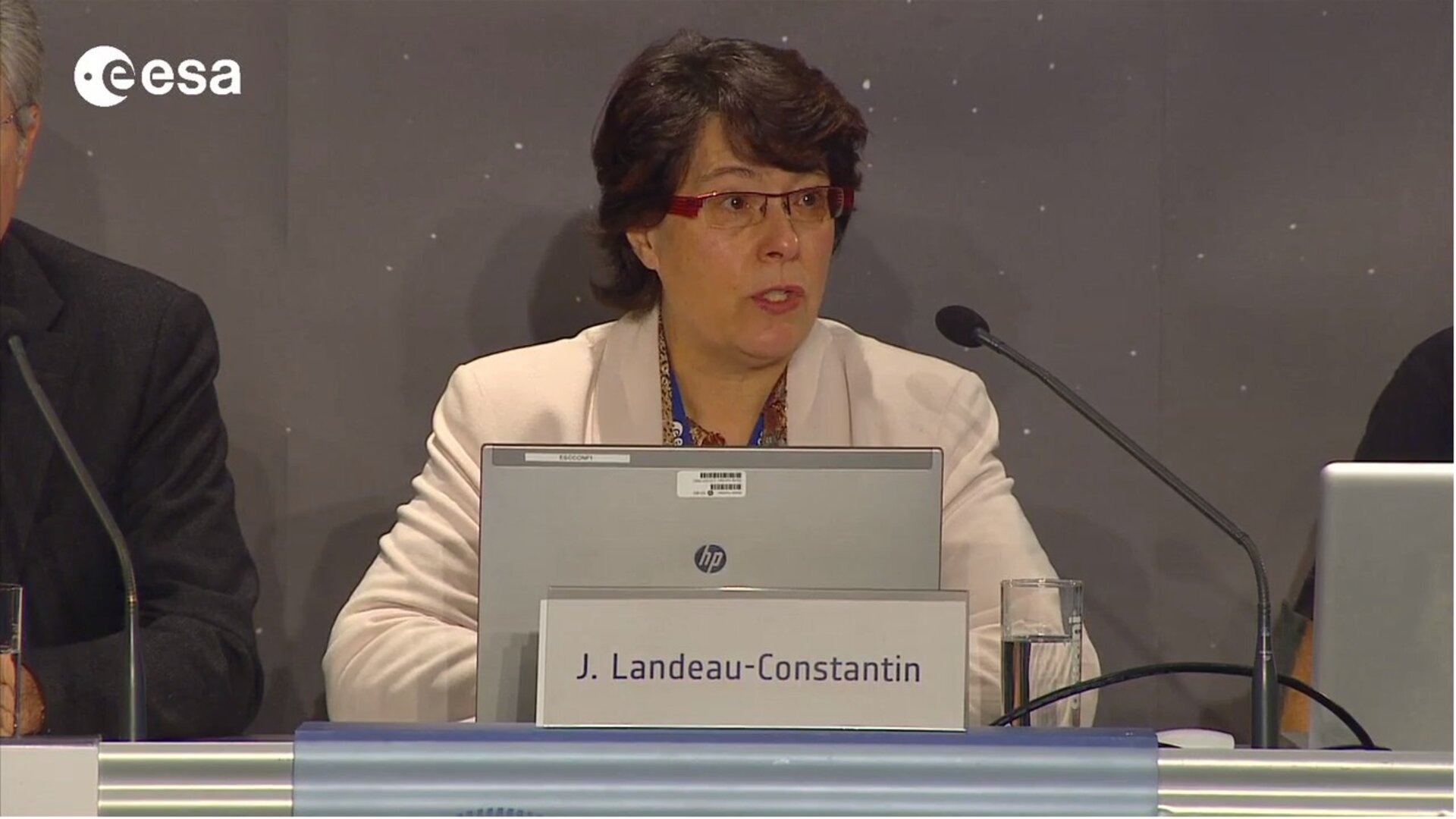
Access the video


